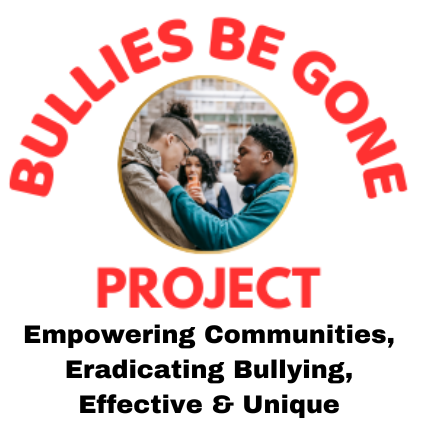Module 12 (Continued)
BODY LANGUAGE TRAINING
Weeks 23 and 24
FOUR CORNERS ACTIVITY
Each volunteer will go to a different corner of the class.
The class will be instructed to carefully watch the body language of each student as they individually walk completely around the classroom, and back to where they started.
The class will grade their peer’s body language while walking.
Inform the class about the Importance of Constructive Criticism and explain what it means. This constructive criticism is important to receive because the bully is seeing the same body language that the class and teacher saw! Therefore, we know what body language we need to improve.
- Students should be told to be candid and KIND when stating what they saw in their peers’ body language.
- Those walking around the room are told to be open and receptive to their peer’s evaluation of their Body Language while walking.
- This exercise gives a clear indication of what students’ peers are visually seeing in another student’s body language.
After the 4 corners drill is over, inform students that their body language and how they appear to others:
- Could be the difference in a bully, or anyone, approaching you with bad intent.
- May result in a bully NOT approaching you because of the powerful signal your body language is sending out.
- Never forget, your Magnificent & Outstanding Body Language can be an effective tool in the prevention of bullying and even doing well in a job interview. Explain how Body Language plays a major role in the job-seeking world
Inform students:
- Practice having good or excellent body language for the rest of your life.
- Be sure your head and eyes are not fixated on your cell phones for extended periods. Why? Because your head will probably be down slightly or drastically. You will be displaying POOR BODY LANGUAGE. This is just a fact!
The solution:
- While in public, no matter where you are, unless it is necessary (like an emergency), avoid having your attention on your cell phones for extended periods.
- By focusing your attention on a cell phone, you are not keenly aware of what is taking place around you.
- You will be unable to relax, react, and respond (the “3Rs”) as necessary to a negative encounter of any type.
If It Is Necessary/Important To Be On Your Cell Phone In Public, Be Prepared For The Unexpected!
Anyone, no matter their age, should periodically look away from their phones and check out what is taking place in their environment, especially activities that are nearby. You can then go back to your cell phone but repeat the process in periodic intervals.
- Someone you are not aware of could be watching you with the intent to do you harm!
- Criminals say there is no way a person who is fixed on their cell phones can react quickly enough to an aggressive attack. Hence, they are easy victims.
- Out-of-control vehicles could be dangerously approaching.
- In crosswalks, it is NEVER safe for anyone to have their heads down, with all their attention on a cell phone.
- Some people, while driving, simply do not slow down or stop their cars as they should when streetlights are not green. They plow right through a red light.
- On the news, hit-and-run incidents frequently occur, often in crosswalks, especially around sunset and evening hours.
- Reaction time to danger will be inadequate if you are fixated on your cell phone.
By you not being aware of your environment, the bully can easily apply the elements of SIC, allowing the bully to take advantage more easily. (The very important and critical SIC occurrence will be taught in an upcoming module.)
You can also tell your parents how important body language is for adults. (In a nice way, of course)
Another story follows to help you mentally remember, develop, and maintain good body language for the rest of your life.
Show this video which is about a 12-year-old girl on stage with Al Johnson at a BBGP Body Language presentation, and how Al immediately improved the girl’s body language from poor to confident by teaching her the “Name of Your Street” Body Language training, which will be explained in the story.
Students must practice and keep in their MIND what was revealed in the story with the “Name of Your Street Training” of the 12-year-old girl. That story applies to you as you go about your daily routine.
Role Play with student volunteers what was explained in the video.
REMINDER: Modules 1-16 are followed by a short quiz (in the student workbooks) so students can demonstrate mastery of the lesson. This is followed by a teacher evaluation, taking into consideration various aspects of what the students have learned from that module. Please make special note of any particular accomplishments, improvements made, or areas in need of improvement, FOLLOWED BY YOUR SIGNATURE AND DATE.


